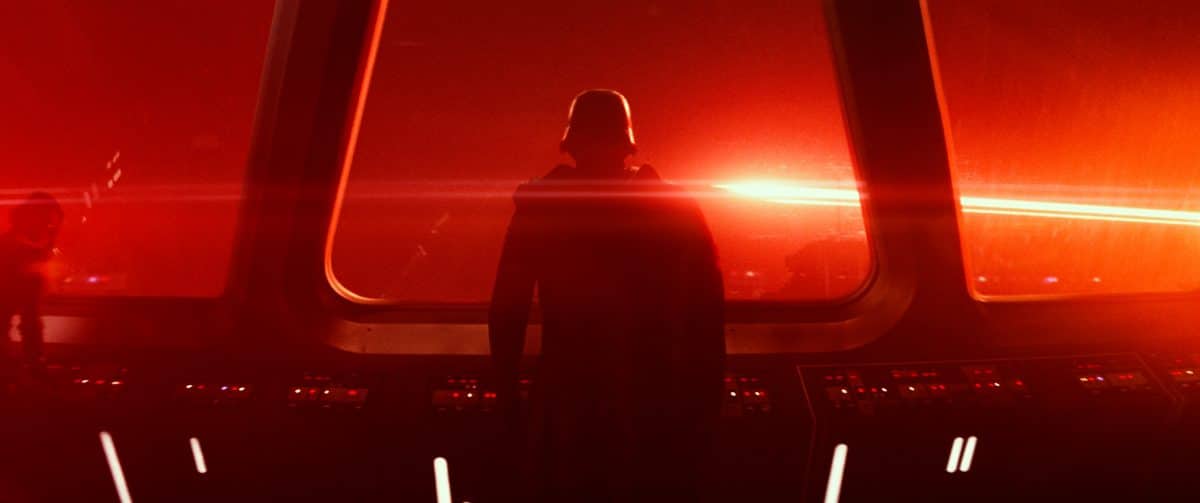
from the Star Wars: The Force Awakens trailer
© 2014 Lucasfilm Ltd. & TM. All Right Reserved.
We go to the movies to escape the fast pace of our lives. For the simple price of an admission ticket, we can immerse ourselves in the world of a character for two hours, experiencing their transformation along the way. Unfortunately, though, we can be robbed of the journey because the trailer has revealed too much of the hero’s path.
How often have you heard someone comment, “They showed the best parts during the trailer,” or, “If you’ve seen the trailer, you’ve pretty much seen the movie”?
I remember, many years ago, eagerly anticipating the trailer for the new Sam Raimi film, Spider-Man 2. As the footage flashed by, I witnessed the web-slinging action of one of my favorite superheroes and became excited to witness the next steps in his journey. But then something happened. Doc Ock took the unconscious body of Spider-Man and laid it on a couch before Peter’s revenge-seeking friend Harry… who then tore off the mask, unveiling the face of his best friend.
While I still loved the film, what should have been a shocking surprise instead became a ruined moment of tension. The trailer had revealed a key beat of the story, lessening the impact that the filmmakers had worked so hard to create.
Unfortunately, that is not an isolated case. Movie trailers today seem to expose more and more of the plot before the film even has a chance to grace the silver screen. Perhaps the studios want to build hype. Maybe it’s because they want to show off the special effects or the funniest moments. But no matter what the reason, trailers that reveal too much of the movie ultimately end up decimating the story.
For example, the trailer for Terminator: Genisys received backlash for giving away a surprise twist. The teaser for Batman v. Superman: Dawn of Justice was effective in creating hype for the superhero rivalry, but the trailer itself revealed the Act Three surprise.
When we look at movie trailers through the lens of the beats Blake Snyder taught, we realize that many modern trailers show too much by focusing on giving the audience scenes from the wrong beats.
For example, many trailers will include the All Is Lost moment and the Dark Night of the Soul, which often involves the character realizing what they were supposed to learn in the Theme Stated beat. Talk about Spoiler Alerts!
Some even show the Break into Three moment, allowing us to witness the characters storm the castle during the Finale. Perhaps one of the biggest disappointments is when a trailer reveals the protagonist digging deep down to summon their strength to finish the journey.
Audiences know that if the screenplay is a good one, the hero will pass through The Transformation Machine and exit as a new being, a butterfly emerging from its chrysalis. But how the hero does that — their story — should remain a mystery.
How can a trailer create the hype and audience draw that is needed to make a film financially profitable at the box office without revealing the story’s secrets? The answer lies in using the right beats, not focused on flashy special effects, but on a character we want to root for.
That’s the premise of Blake’s Save the Cat!®, and it’s what an effective trailer is built on:
- To achieve its full potential, the trailer should allow the audience to see the character in their thesis world, prior to their journey through The Transformation Machine.
- A hint of the six things that need fixing is revealed, along with a reference to the Theme Stated beat, the lesson the character will need to learn.
- We often see a glimpse of the Catalyst beat that will set them on their quest and, just as the Catalyst will cause the character to question events, we want to know more, too.
- Scenes from the Debate beat might highlight those questions.
- And though moments from the Fun and Games beat are present (Blake noted that the Fun and Games beat was the promise of the premise, the “trailer moments” that the audience went to see), the best should be saved for the film itself.
Of course, there are many films whose teasers or trailers do just this. Several of them that immediately come to mind are from director J.J. Abrams, which is probably not a coincidence — because Abrams believes in what he calls “The Mystery Box,” the idea that to tell a powerful story, some elements need to be hidden from the audience, revealed at the appropriate time.
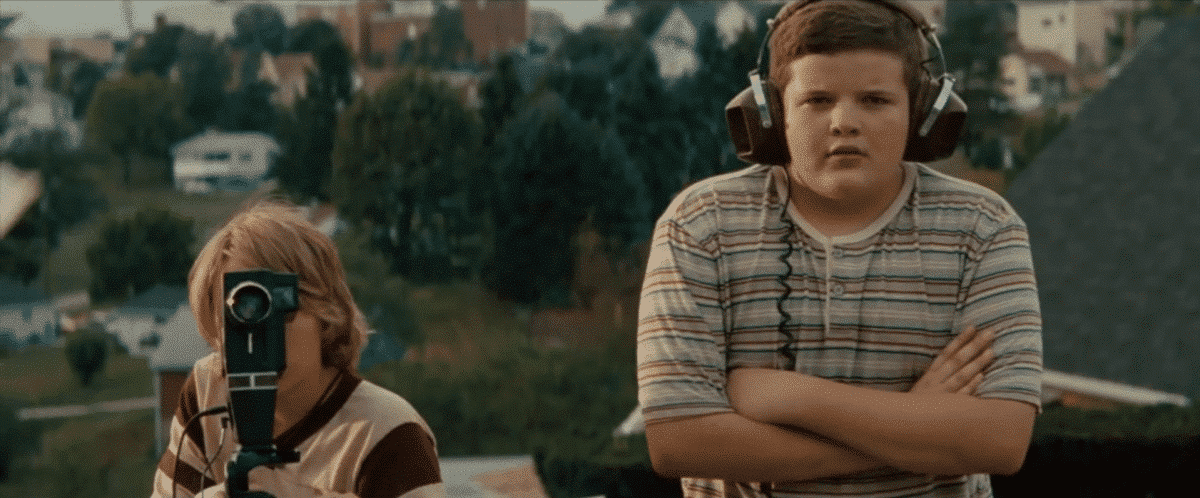
Take, for example, the trailer for Abrams’ Super 8. The footage gives us a glimpse of our main character and the things that need fixing in his life, as evidenced by the conflict shown between him and his father. We know that the protagonist is loyal to his friends, but he needs to find himself. The train crash Catalyst is shown, leading to scenes from the Debate. A montage of Fun and Games scenes reveal the promise of the premise, and yet no key plot points or twists are revealed. Even so, the film and its premise are intriguing, leading the viewer to want more.
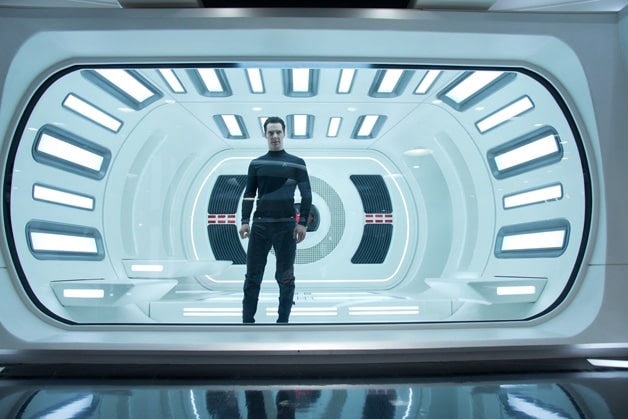
Another Abrams’ film, Star Trek Into Darkness, has a trailer that does the same thing. As the camera pans through scenes of the Starship Enterprise, we hear the voice of Captain Pike instructing James Kirk: “There’s greatness in you, but there’s not an ounce of humility.” It certainly sounds like a Theme is being Stated, and it’s one of the things that need fixing in Kirk’s life. “You think you can’t make mistakes, but there’s going to come a moment when you realize you’re wrong about that,” Pike continues. As more scenes flash across the screen, showing us the characters, it is evident that this is exactly what will happen to Kirk and his crew. We get a glimpse of Khan, the antagonist, followed by Fun and Games moments, but still, no key plot points are revealed. A final voice-over by the antagonist asks, “Is there anything you would not do for your family?” It’s a journey we are on board for, as all of us can identify with the struggles that Kirk will face.
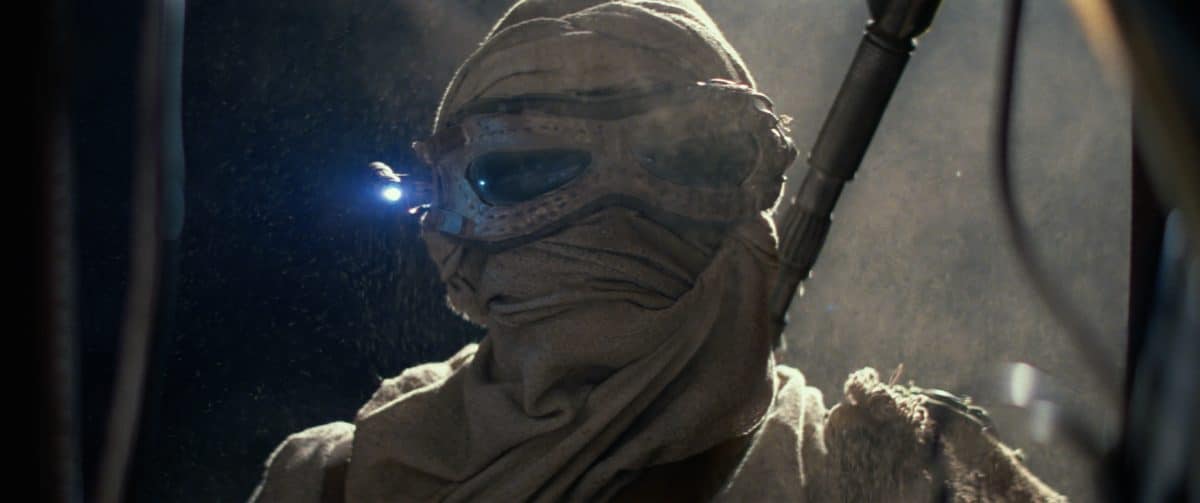
© 2014 Lucasfilm Ltd. & TM. All Right Reserved.
Then there’s Abrams’ Star Wars: The Force Awakens. The trailer opens with the main character in her thesis world, a voice-over asking, “Who are you?” As glimpses of Rey are revealed, we sense that there are things that need fixing in her life, and we want to see her transform. The other protagonist, Finn, reveals that he was raised to do one thing, but he has nothing to fight for (a clear example of Stasis = Death). As a new villain is revealed, other scenes provide callbacks to the original trilogy while giving us a peek of the Fun and Games we can expect, the promise of the premise of being a Star Wars film. Over scenes of characters and action, Han Solo says, “It’s true… all of it. The Dark Side, the Jedi… they’re real.” The Force is mentioned, inviting the characters (and us) to let it in. And audiences did let it in, to the tune of becoming a box office smash. Some could say that the film did well because it was a Star Wars tale, but I believe that part of its allure was the trailer, which provided just enough to satisfy the audience’s cravings yet not so much that it ruined the story.
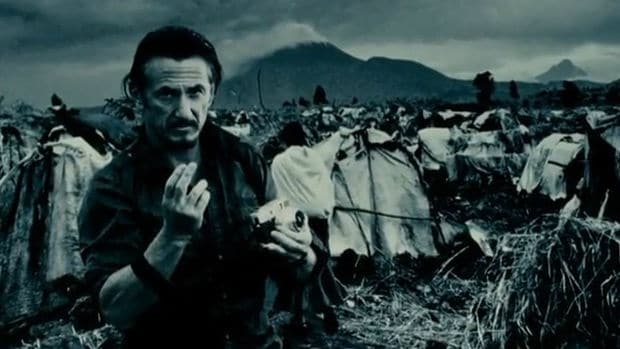
A great example of a trailer that shows the thesis world of the character and his need to change can be seen in the Ben Stiller film The Secret Life of Walter Mitty. Beginning with scenes that show a clear Stasis = Death life for the title character, we watch as he blends in to the world around him. He saves the cat and gains our sympathy as we learn what sets him apart—he’s a daydreamer, ridiculed by others around him. Things certainly need fixing in his life, and he soon witnesses the Catalyst through his wandering mind. The trailer concludes with several Fun and Games moments, hinting at his journey through The Transformation Machine—or are they just more daydreams? The movie itself didn’t fare well at the box office—it garnered only 51% on Rotten Tomatoes and 54 on Metacritic, but audience ratings were higher at 74% and 7.4, respectively. Perhaps the poor critical reception hindered moviegoers from seeing it at theaters, but those who gave it a chance later liked it.
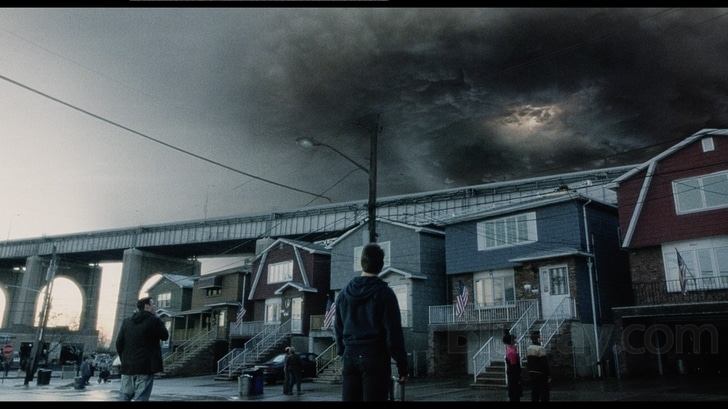
Steven Spielberg’s War of the Worlds is a retelling of the classic tale, so one might think that the trailer would be bound to give away the key plot points and surprises. After all, we already know the story. Yet, by focusing precisely on the key beats discussed above, the trailer concentrates on the protagonist and his family, and keeps the audience wondering about the story as a whole. Tom Cruise’s character, Ray, is shown in his thesis world, being told by his boss that he has problems to overcome. We learn that he is divorced, distant from his two children, and irresponsible. It is only when we witness the Catalyst and the Debate that we realize that this tale of an attack from Mars will involve a deep character change for Cruise. Moments from the Fun and Games and Bad Guys Close In are shown, but only in glimpses; the focus remains on the characters, not on the special effects. As a result, we care about what happens, and we want to see more of this familiar story.
When a trailer focuses on key story beats, the character’s journey is palpable but still waiting to be explored and experienced. And so, when we actually see the film, we are allowed to discover what makes it great—the surprises in stories about transformation that resonate in our hearts and in our minds forever.
Cory Milles
5 Comments
Leave a Reply Cancel reply
You must be logged in to post a comment.


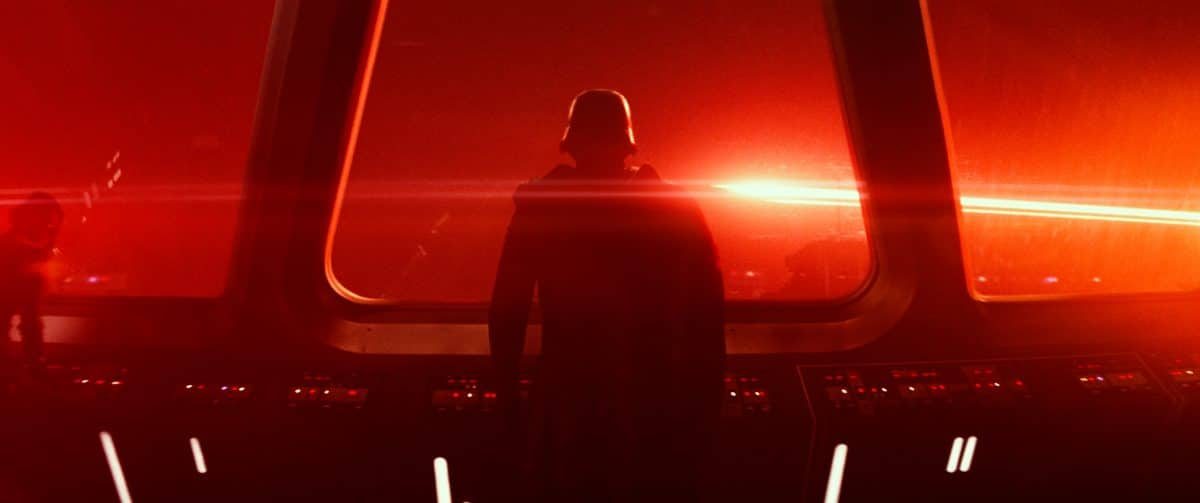







Excellent insights, Cory. Totally agree.
Are you sure that photo is of “Sean O’Connell?”
Yep. All the captions in this post refer to the character’s name, not the actor’s.
Good points. The studios want to make sure that they get the biggest audience, so they are inevitably going to show the best bits unfortunately.
Is there a beat sheet for creating a trailers? esp. for Documentary?
Thanks, J